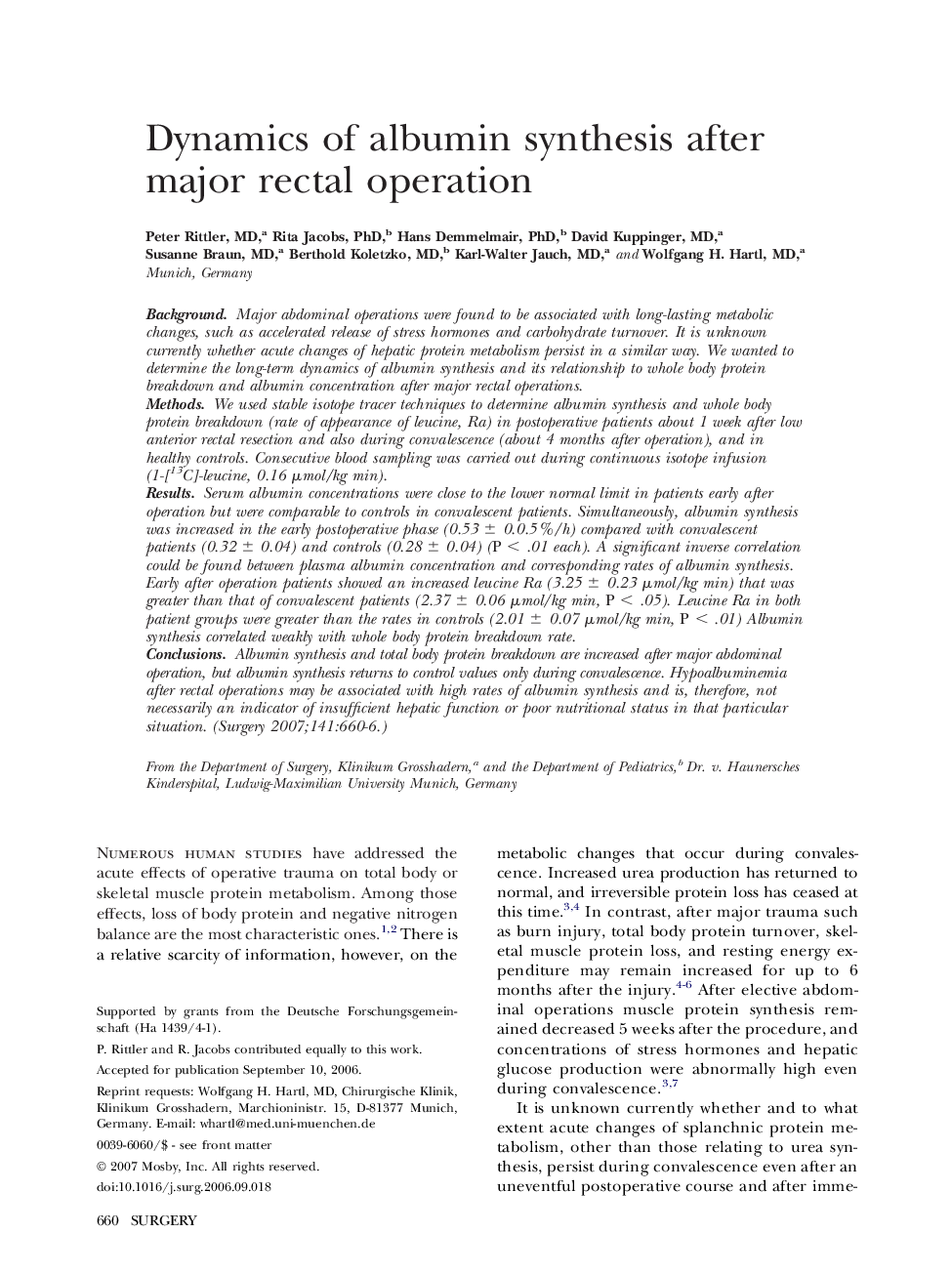| Article ID | Journal | Published Year | Pages | File Type |
|---|---|---|---|---|
| 4309712 | Surgery | 2007 | 7 Pages |
BackgroundMajor abdominal operations were found to be associated with long-lasting metabolic changes, such as accelerated release of stress hormones and carbohydrate turnover. It is unknown currently whether acute changes of hepatic protein metabolism persist in a similar way. We wanted to determine the long-term dynamics of albumin synthesis and its relationship to whole body protein breakdown and albumin concentration after major rectal operations.MethodsWe used stable isotope tracer techniques to determine albumin synthesis and whole body protein breakdown (rate of appearance of leucine, Ra) in postoperative patients about 1 week after low anterior rectal resection and also during convalescence (about 4 months after operation), and in healthy controls. Consecutive blood sampling was carried out during continuous isotope infusion (1-[13C]-leucine, 0.16 μmol/kg min).ResultsSerum albumin concentrations were close to the lower normal limit in patients early after operation but were comparable to controls in convalescent patients. Simultaneously, albumin synthesis was increased in the early postoperative phase (0.53 ± 0.0.5%/h) compared with convalescent patients (0.32 ± 0.04) and controls (0.28 ± 0.04) (P < .01 each). A significant inverse correlation could be found between plasma albumin concentration and corresponding rates of albumin synthesis. Early after operation patients showed an increased leucine Ra (3.25 ± 0.23 μmol/kg min) that was greater than that of convalescent patients (2.37 ± 0.06 μmol/kg min, P < .05). Leucine Ra in both patient groups were greater than the rates in controls (2.01 ± 0.07 μmol/kg min, P < .01) Albumin synthesis correlated weakly with whole body protein breakdown rate.ConclusionsAlbumin synthesis and total body protein breakdown are increased after major abdominal operation, but albumin synthesis returns to control values only during convalescence. Hypoalbuminemia after rectal operations may be associated with high rates of albumin synthesis and is, therefore, not necessarily an indicator of insufficient hepatic function or poor nutritional status in that particular situation.
